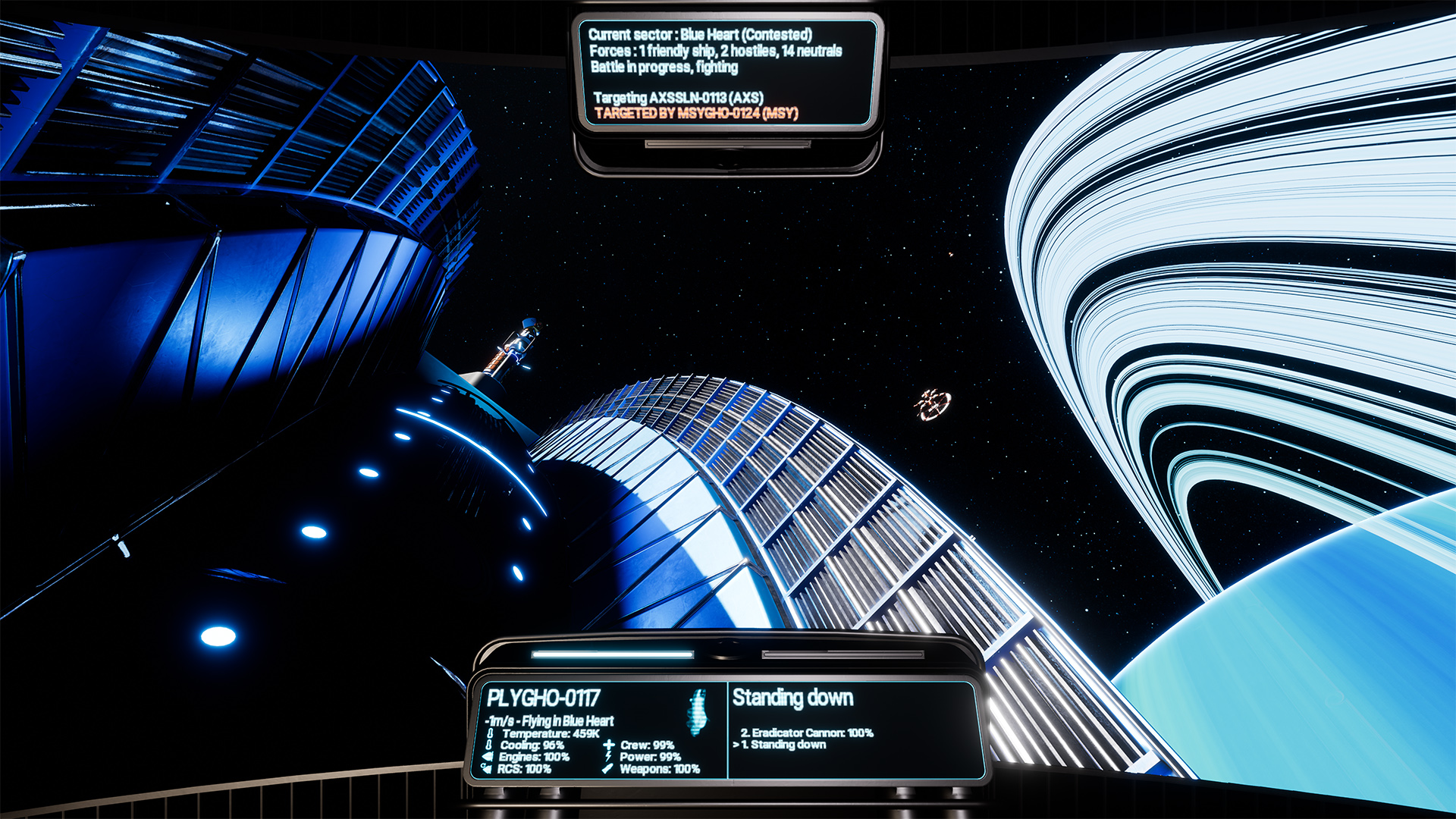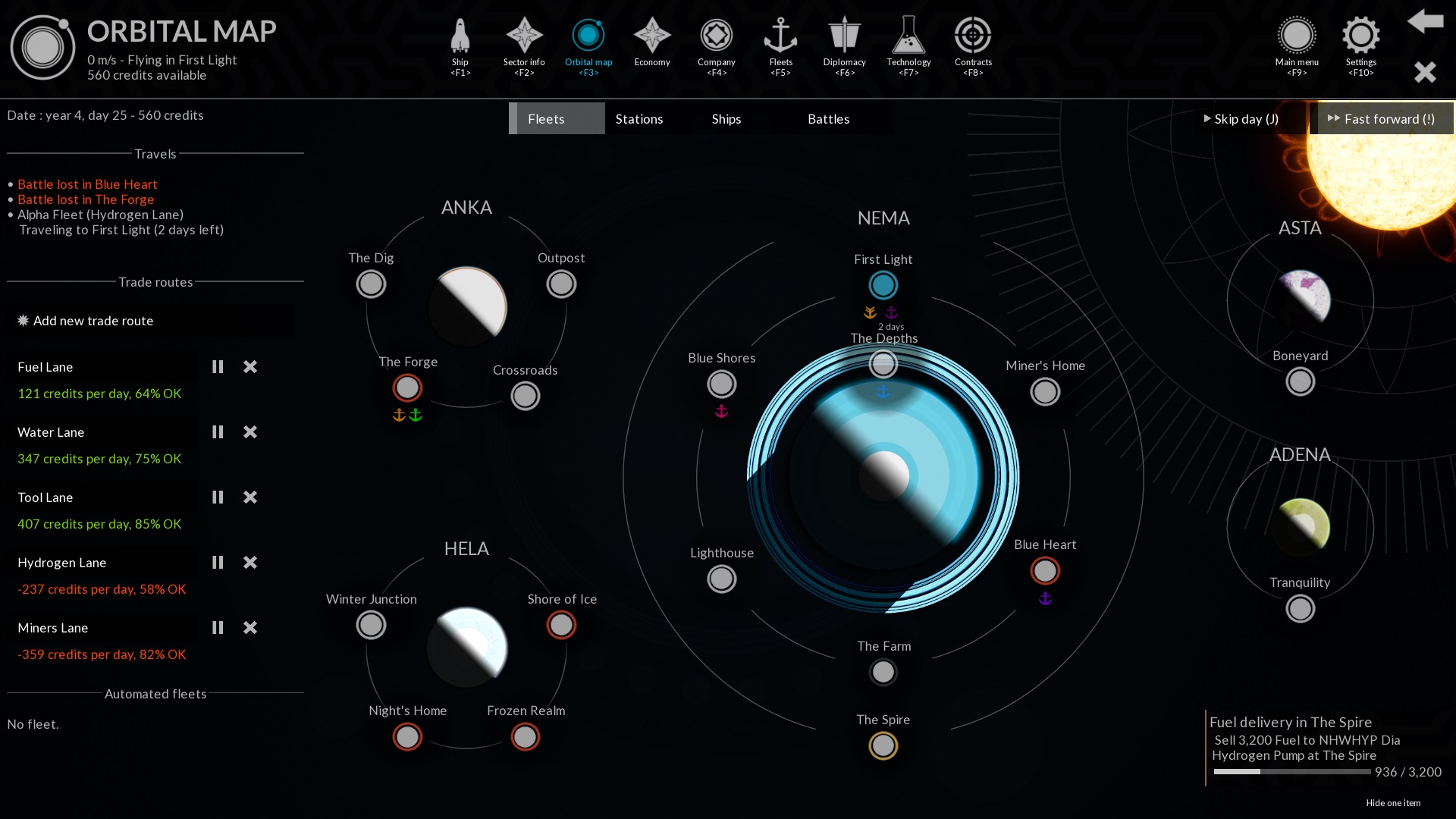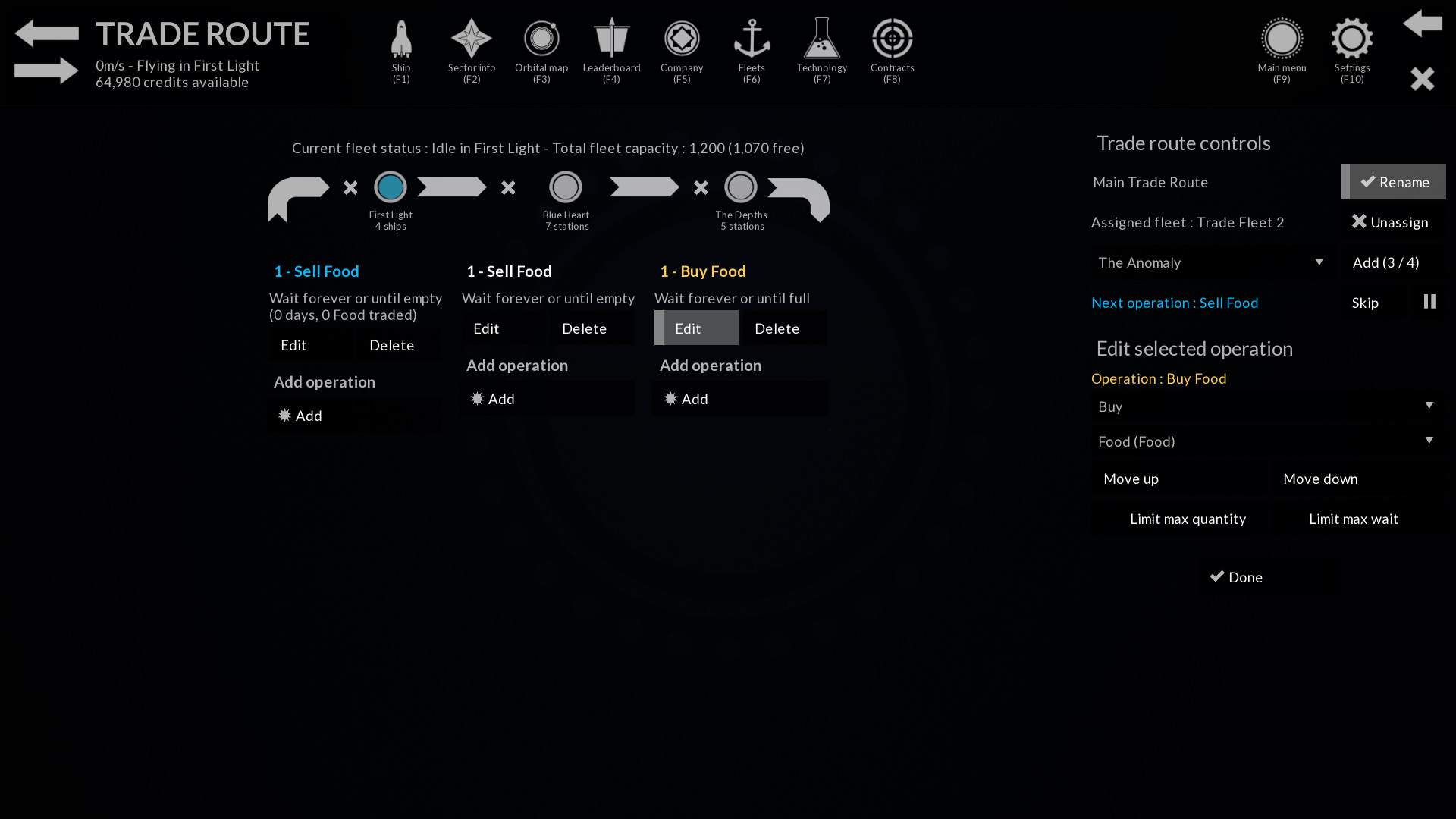Devblog
Helium Rain economy
Let's talk about Helium Rain's core gameplay - the economic model that runs the game.
In Helium Rain, you play as a company owner. You can trade resources with other factions, build ships, stations, or even take control of resource-rich areas, depending on your company’s power. Your company can focus on military aspects, but the economy is still at the heart of the game.
The game is built with realism in mind, so instead of building a fake world that behaves like it’s living, as other games do, we decided to simulate an actual world.
- Nothing appears out of thin air, resources have to be extracted, processed and traded.
- The game has dynamic prices for resources, depending on supply and demand.
- Ships, stations, ammunition or even food are created from raw resources.
- Travelling between moons or producing ships takes days.
The game’s world is highly dynamic, because the starting point is quite small. Your competitors will evolve just like you. Some of them have their base close to you, in a giant space station that acts as a capital to the game’s world, others operate on distant moons.

Companies
Companies are factions in the game. Companies in Helium Rain have basically replaced countries : they build their own military fleets, offer housing to civilians, have diplomatic ties with other factions, on top of the usual business activities. They usually specialize in some aspect of the economy, just like in the real world.
Some companies are small businesses that you could topple, other are structural to the economy. Attacking the largest companies is risky in multiple ways : they won’t even notice you in early game, and when you are strong enough to damage them, the economic fallback will also damage you. It’s often a bad idea to destroy your food or ammunition provider, and too much destruction in war can lead to long-term depression for the entire world.
Gameplay
In early game, trading is mostly about finding good deals for resources. You need to find a cheap seller, load your ship with cargo and sell these wares to a station needing it. This actually helps the economy - if you don’t do it, someone else has to.
Once you have enough funds, you will be able to buy more ships, then you will be able to build stations. End-game players will probably try to be self-sufficient so that warfare and diplomatic setbacks have less impact on their finances, but a pacific player can perfectly rely on other companies as well.
Since trading is so essential to gameplay, the game features a lot of menus and tools to help you. The main gameplay hub is the orbital map, which is a general map of the game world. You don’t have much detail on this map, but it acts as a starting point for all decisions. Clicking on a sector brings you detailed information for this area.

The sector menu is the next important tool, as it lists all objects in the sector, inspect resource production and stocks. This is where you will select trading partners, refuel your fleet, find a station to dock at, a ship to upgrade or a station to build. Each sector offers information on the resources needed there, so that you can understand the local economy. Resources can also be shown globally, helping you understand which trade route will bring you the most revenue.

Trade routes are automated trading commands for your fleets. You can set up complex chains of operations to sell your products, buy raw resources, or just trade commodities between third parties.

Fun facts
The economic model allows for deep interaction with the world.
- There is no magical creation of resources. Even AI competitors actually need to mine, forge, assemble their products. AI factions play with the same rules and you can take their place in the world economy.
- The game simulates an actual population that buys food, fuel, tools or technological products. Population growths drives increased demand.
- Any faction can produce ammunition or repair supplies and sell them to competitors, so you might end up getting fire at with ammunition you made.
- You can get in a bomber and attack a competitor’s factories. Other companies will have to buy resources from you instead. You can also win a war by cutting off your opponent’s supplies.
- Destroying all production for a resource imperils the entire economy. There are no safeguards for this, so you can break the game and drive yourself into financial crisis.
Thanks for reading !
